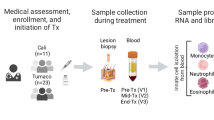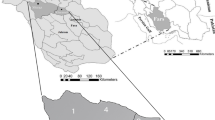Abstract
THREE successful experiments have been recorded by us in which cutaneous leishmaniasis was transmitted to man by inoculation of Herpetomonas papatasii from naturally infected sandflies (Phlebotomus papatasii ♀ ♀) (Annals of Trap. Med. and Parasitol, vol. 20, No. 2). Noguchi (“Action of Certain Biological Chemical and Physical Agents upon Cultures of Leishmania; Some Observations on Plant and Insect Herpetomonads”. International Conference on Health Problems in Tropical America, 1924) and Kligler (“The Cultural and Serological Relationship of Leishmania”. Transact. Rov. Soc. Trop, Med, and Hyg., vol. 19, Nos. 5 and 6, 1926) have introduced methods of preparing immune sera and distinguishing Leishmania tropica, L. donovani, and L. braziliense by agglutination. Agglutination and cross agglutination experiments with cultures from the three experimental lesions and three strains from naturally acquired lesions (two from Palestine and one from Baghdad) definitely proved the identity of the organisms from the experimental lesions with Leishmania tropica. Herpetomonas papatasii is, therefore, a synonym of Leishmania tropica, and the fact that Phlebotomus papatasii is a natural transmitter of cutaneous leishmaniasis is completely established, since in addition to the evidence of experimental transmission the Herpetomonas naturally occurring in the above insect is shown to be biologically identical with Leishmania tropica.
This is a preview of subscription content, access via your institution
Access options
Subscribe to this journal
Receive 51 print issues and online access
$199.00 per year
only $3.90 per issue
Buy this article
- Purchase on SpringerLink
- Instant access to full article PDF
Prices may be subject to local taxes which are calculated during checkout
Similar content being viewed by others
Author information
Authors and Affiliations
Rights and permissions
About this article
Cite this article
ADLER, S., THEODOR, O. Identity of Herpetomonas papatasii and Leishmania tropica. Nature 118, 85 (1926). https://doi.org/10.1038/118085a0
Published:
Issue date:
DOI: https://doi.org/10.1038/118085a0



